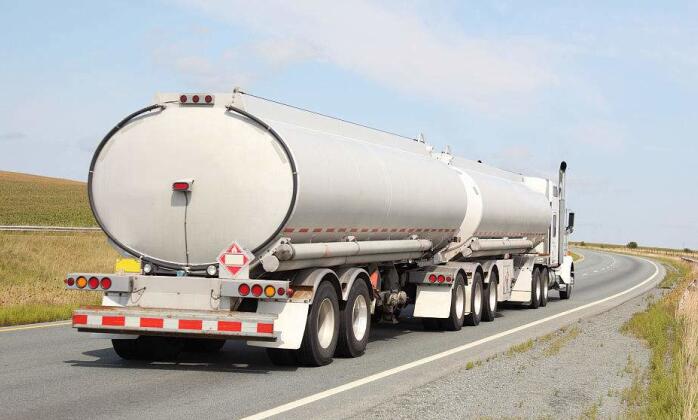Tanker trailers are absolutely vital equipment in the transportation industry. Liquids present a particular problem when being transported, especially dangerous chemicals, and the weight of the cargo and sloshing capability make pulling tanker trailers a specific art among professionals drivers. Those drivers are laser-focused on safety even when the cargo is something as benign as milk headed to the manufacturer for bottling. And of course, hauling placarded chemicals that must be unloaded by either tipping or pneumatic pumping carry certain safety issues as well. It is important for all hazardous chemical drivers and their employers to understand the dangers associated with moving tankers, and they should all stress following all safety precautions from the beginning to the end of the route. Here are a few things to consider when using a tanker trailer.
Different Tanker Trailer Types
The first issue with tanker trailers is having the right trailer for the job. There are multiple types of containers available ranging from the single circular tank to the multiple vat designs that provide better balancing while the cargo is in transit. The particular type of liquid can affect the choice of the best trailer for the moving project. Finding the exact tanker necessary for the job can be challenging in some instances, and many haulers that ship particular types of liquids may want to locate a tank trailer for sale as opposed to renting in hopes of finding the best available container. Different types of tanker trailers include:
- Petroleum tank
- Asphalt tank
- Pneumatic tank
- Vacuum tank
- Stainless food-grade tank
In addition, different types of trailers also have different suspension systems, and certain products may transport more effectively with a certain ride system. These can include an air suspension, spring suspension, or tri-axle systems. Making the right tanker selection involves knowing the intended cargo and potential problems at delivery.
Driver Qualifications
All commercial truck drivers are required to attain their Class A Commercial Drivers License, but there are also other restrictions for those who haul tankers. Drivers must have a tank endorsement addendum to their standard professional CDL. This endorsement includes certification after training on the unique problems associated with tankers. Drivers are educated regarding:
- Load capacity and weights
- Speed limits and reductions
- Bulkhead tanks
- Baffled tanks
- Surge control
- Hours of service and other driving restrictions
- Proper unloading techniques
- Hazardous chemical handling procedures
Transporting Tankers
The surge or sloshing effect that a liquid can create makes hauling tankers the most dangerous activity when driving a commercial vehicle. Drivers must be experienced in negotiating curves and maintaining consistent driving speeds that could be well below the limit. Patience is important when hauling liquids because one of the greatest fears when pulling a tanker is tipping over sideways at any point in the transporting process. Stopping distances and potential skids are serious concerns as well, and especially when the tanker is being pulled in inclement weather.
Unloading Cargo
The best practices when unloading the tanker contents depend on many ways on the chemical properties. It is important to use extreme caution when climbing ladders to access release equipment on the tanker. Unloading cargo from a food-grade tanker requires detailed attention to avoiding contamination at any time, including designated types of hoses and pumping gear, and never come in contact with hazardous chemicals when unloading. Tankers that are unloaded by tipping present another specific problem with respect to the force necessary to begin the dumping process. Raising the tank gradually is always the best method because a tanker can actually tip over sideways even when being stationary when the tank is elevated too quickly. And, it is always essential to use the utmost safety precautions when unloading hazardous chemicals, including checking for leaks regularly along the transport route.
These are just a few of the additional safety measures liquid transport companies and commercial tanker drivers face in their everyday work. The U.S. economy runs as the transportation industry allows, and liquids are among the most important products being hauled on American highways. But, they can also be the most dangerous transportation jobs, and respecting the cargo is vital to safe completion of any tank hauling project.













